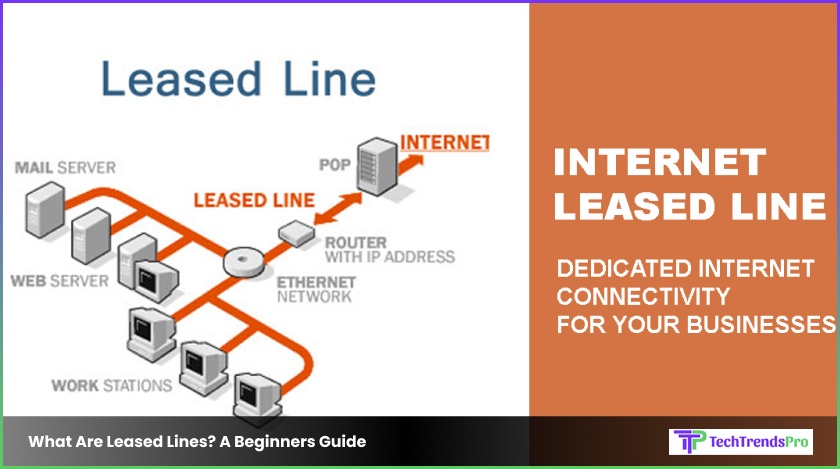
For living in modern-day work-life high-speed internet connections are not a luxury. These are becoming a necessity. To get high-speed internet connections, one great option is installing a fiber optics cable. And another option is leased lines.
Let’s see first what the leased lines are.
What Are Leased Lines?
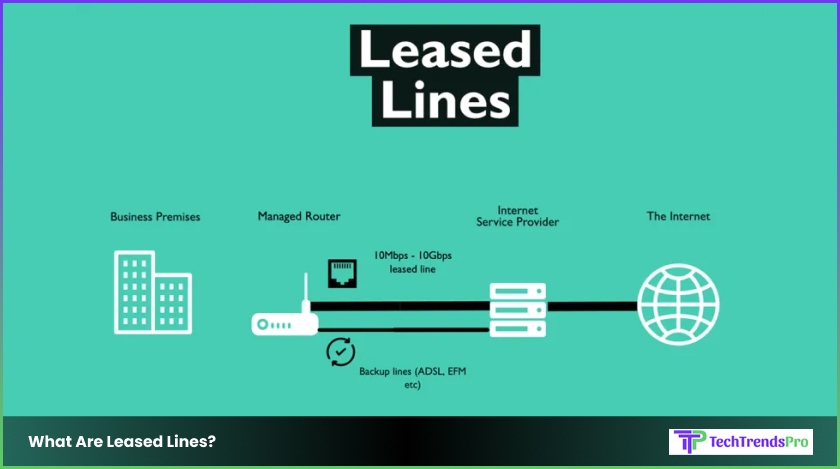
The technical illustrations of what is a leased line are simple. A leased line is a reliable, fixed bandwidth data connection. It allows the business to get dedicated and high-quality internet connectivity. The high-quality internet connections keep the uploading and downloading speed the same.
The lease refers to the connections that the internet service providers rent. The leased lines have some distinctive characteristics. The leased lines refer to the dedicated communications channels that are easily interconnected with two or more sites. The fact is this is a service contract.
4 Different Use Of Leased Lines
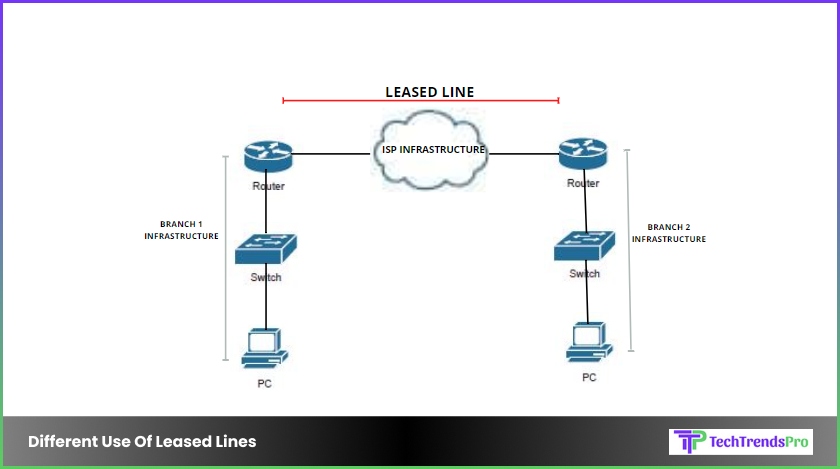
A Leased Line is a committed communication channel that can easily interconnect multiple areas. Often a leased line service-providing contract is signed between a provider and a customer. These dedicated lines ensure continuous data flow.
Here are a few common uses of the regular and internet leased line:
- Carrying the phone calls.
- Link servers and other PC connections in different offices.
- Internet connectivity.
- Give support to the employees in their work from home options.
These are the four common uses of the leased lines. Now let’s move on to the next phase of the article to know the working process of leased lines.
How Do The Leased Lines Work?
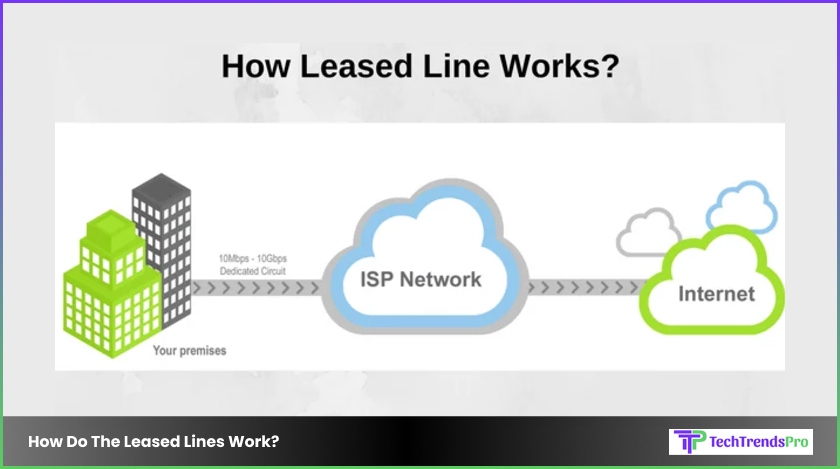
A dedicated leased line uses the same technology as the fiber-optic broadband connections. A fiber optics line is working by sending the pulses of light down a fiber optic cable. When you need to send data down in the fiber optic cable, the equipment is the same from each end.
The equipment represents binary 0 to 1 as the digital data. The data traveling speeds are compared with light’s speed. Still, now there is hardly any faster internet connectivity available. The ISP is unique, and lines are different in this connection. So the data sharing is becoming much more stable.
The leased line is working like the fiber optics cable connections. Leased line connectivity is far stronger. The data packs are traveling faster than you think.
Different Leased Lines Options
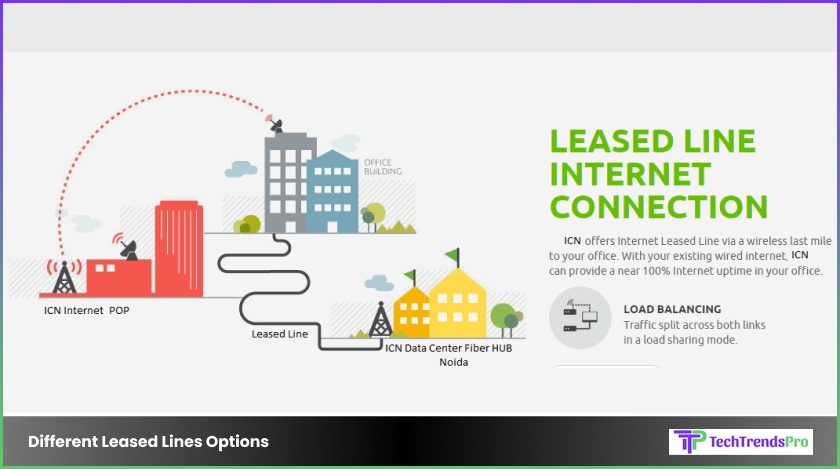
The leased line is available in three different types. Each of these lines works on the base of different operating systems even though the hardware specifications are also different.
Let’s have a look at the three different leased line options and their functions.
1. Fibre Ethernet
This is a direct internet connection with a super-fast Ethernet connection facility. This is the fastest and most reliable internet facility. The 100% fiber optic cables from the business premises are these types of connections.
The leased line fiber Ethernet connectivity has a speed of around 1Gbps. What are you thinking? About the expenses? Do not hesitate to avail of the services of Fibre Ethernet. You will get the fastest internet connectivity.
2. Ethernet Broadband
These leased line fiber connections are also used for business operations. To supply the connections, traditional copper wires are being used. These leased fiber lines connections are the best for the business handlers who do not have a local fiber cabinet. These lines are used to aggregate the copper pairs to ensure a resilient service.
The advantage of using this system is if one copper wire fails. The others are going to take their place. The speed is much lower than the fiber lines. But for the symmetric order, the service is much more stable.
3. Ethernet Over FTTC
For every business, you will get access to all local fiber-based cabinets. The operations of the FTTC are similar to the EFM. You can address it as the cheaper version. These types of leased fiber line connections are a mixture of fiber and copper wire.
Many of the service providers are offering these symmetric connection options, which increase the download and upload speed. This is the combination of symmetric and bursting connections. These symmetric connections are improving the download speed even more than the upload speed.
When Do You Need The Leased Fiber Line Services?
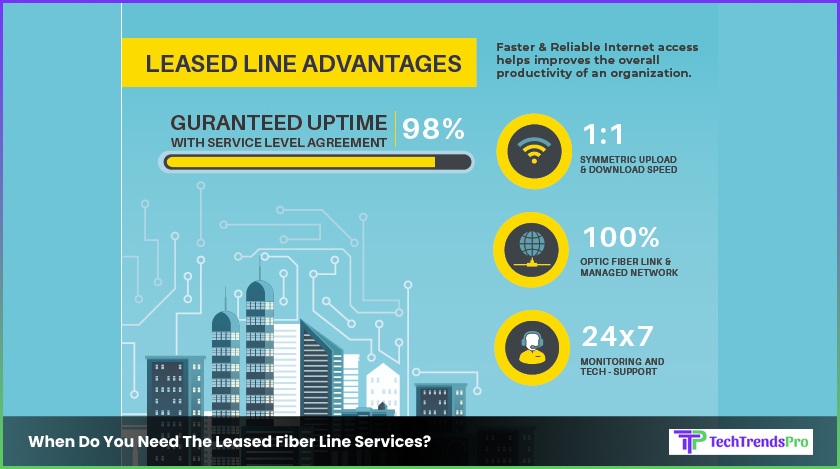
When your business requires a speedy connection, you have to use the leased lines. Now, most business organizations require fast internet connectivity along with surety. This is the reason the leased line fiber line and the cloud services are also getting popular.
The symmetrical connections make use of VoIP. And convert it into a perfect business telephony and communications base.
How to know when you require a leased fiber line?
Here are three different sector names where the leased line fiber has maximum use:
1. For Speed-Sensitive Data Transfer
Any type of business that needs fast and secure data transfer should use the leased fiber lines. For example, digital business e-commerce services and another business type where internet usage is compulsory for file and data transfer.
Where you require a faster response, you have to use the speed-sensitive data transfer system.
2. Heavy-Duty Software Services
The heavy-duty software services like Saas and for CRM business you are using multiple heavy-duty software. The cloud services and the other business operations are using the CRM systems. The leased fiber line is giving you the maximum facility by streamlining the whole transfer process.
Wherever large datasets are crunching in the clouds, you must use these lines. These are very data-focused for individual tech businesses. You have to use a leased line, wherever you have to analyze the personal customer data.
3. VoIP Services
Any business which keeps using VoIP for their business calls. They are always going to need a very stable connection. The standard leased line fiber broadband is more trustworthy for call-taking. When businesses require 20 or more concurrent high-quality calls with better speed, you must use these services.
Symmetrical leased fiber line connections are good options for VoIP Services.
Advantages of Leased Line Networks
- Reliability: Leased lines are dedicated connections, guaranteeing consistent, reliable performance. This is crucial for businesses reliant on uninterrupted connectivity.
- Symmetrical Speeds: Leased lines offer symmetric bandwidth, meaning upload and download speeds are the same. This is ideal for applications like video conferencing and data transfers.
- Low Latency: With minimal latency, leased lines ensure seamless real-time communication, making them ideal for voice and video conferencing.
- Security: Leased lines provide a high level of security, reducing the risk of data breaches compared to shared networks.
- Scalability: Businesses can easily scale their bandwidth up or down to meet changing needs, providing flexibility.
Disadvantages of Leased Line Networks
- Cost: Leased lines can be expensive, both in terms of installation and ongoing monthly fees, making them less accessible for smaller businesses.
- Limited Coverage: Availability of leased lines is often limited to urban areas, which can be a drawback for businesses in remote locations.
- Complex Installation: Setting up a leased line network can be time-consuming and may require technical expertise.
- Single Point of Failure: While leased lines are generally reliable, they can suffer from a single point of failure if not adequately backed up.
- Bandwidth Limitations: Bandwidth options may be limited compared to some newer technologies, potentially limiting future growth.
Key Features of Leased Line Networks
Thinking about the features of the leased line network? Well, I have you covered! Here are some of the features that you need to know about:
- Dedicated Connection: Leased line networks provide businesses with a dedicated, private connection to the internet or other remote locations. Unlike shared connections, where bandwidth fluctuates based on usage, leased lines offer exclusive, uncontested access. This ensures consistent and predictable network performance, critical for applications like VoIP, video conferencing, and data transfers.
- Service Level Agreements (SLAs): Leased line service providers typically offer SLAs that guarantee uptime and specify response times in case of issues. These agreements provide businesses with a level of assurance and accountability, as providers are contractually obligated to meet certain performance standards. SLAs can be crucial for businesses that rely on uninterrupted connectivity for their daily operations.
- Scalability: Leased line networks are designed to accommodate the evolving needs of businesses. Companies can easily upgrade or downgrade their leased line bandwidth as demand fluctuates. This scalability allows organizations to adapt to changing requirements without the need for significant infrastructure changes or downtime.
- Managed Services: Many leased line providers offer managed services, including network monitoring, maintenance, and technical support. This means businesses can offload the responsibility of network management to experts, reducing the burden on their internal IT teams. Managed services can also enhance network security and performance.
- High Availability: Leased lines are engineered for high availability. They are designed with redundancy and failover options to minimize downtime in case of network disruptions. This feature is especially crucial for mission-critical applications where even short outages can result in significant losses.
Quality of Service (QoS): Leased line networks often come with QoS capabilities that allow businesses to prioritize traffic for critical applications. QoS ensures that bandwidth is allocated appropriately, guaranteeing optimal performance for essential services even during periods of heavy network traffic.
Frequently Asked Questions (FAQ):
1. What Is The Difference Between Leased Lines And Broadband?
Internet-based leased lines are dedicated internet connections that provide direct connectivity, which is a little different than the broadband’s operation processes. Broadband processes can not be shared among the multiple third-party users in the local areas. But it gives you stable, high-quality connectivity.
2. What Is The Difference Between VPN And Leased Lines?
Leased lines provide very dedicated connections with high bandwidth. But there is no encryption and authentications. VPN provides better encryption and authentication over the connectivity.
3. Are You Investing In A Leased Line? Is It Worth Spending It?
A leased line may seem more expensive, but in the long run, it is worth spending for the business. Leased lines are giving you high-speed connectivity with high data security and better performances.
Conclusion
A leased-line is a dedicated communication channel where interconnections are readily available. You can connect more than one site with these lines. The lines ensure continuous data flow from one point to the other. This line is the ultimate choice for faster data transactions for every enterprise and organization. So which connections are you using right now?
Read Also:






